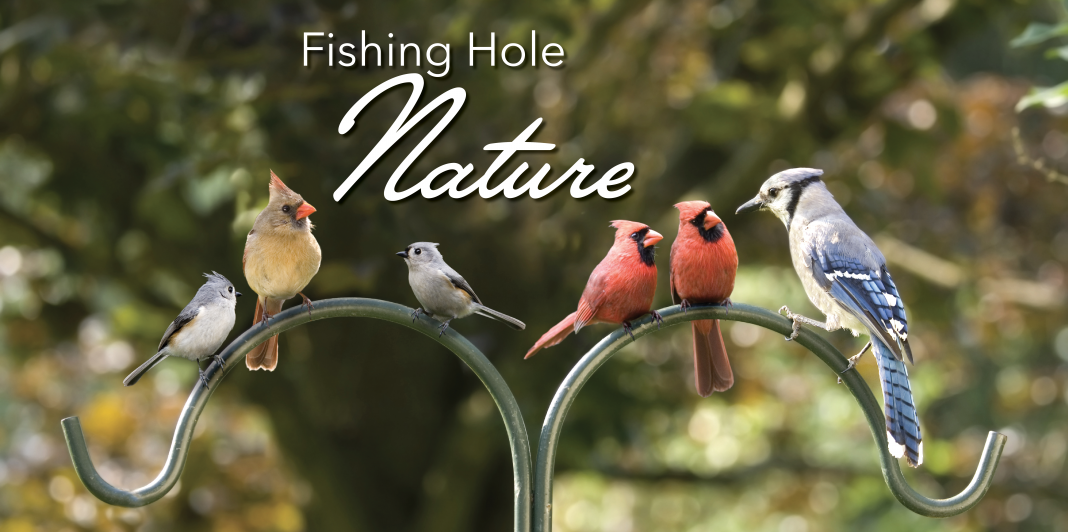It’s a famous song from a famous movie, the Wizard of Oz. But we don’t have to go “over the rainbow” to see bluebirds because these bright little fellows live right here in East Texas! Weighing in at a mere 1 ounce, Eastern Bluebirds are only about 6” long with a 9” wingspan. The males have stunning bold blue backs and rust brown breasts, while the females are more muted in color with less blue and more brown. Be aware that bluebirds are insect eaters, not seed eaters, and you won’t attract them to your feeders unless you have a grub or mealworm feeder.
A little human intervention with nest boxes has gone a long way to increase bluebird numbers. The native population has been under heavy attack for decades by an invasive European species, the common house sparrow. This one invasive sparrow aggressively kills nesting bluebirds and chicks so that they can take over nesting sites for their own use. To counter this, people can build nest boxes with hole sizes that preclude house sparrows from entering. The boxes sit on poles about 5-6’ off the ground and have metal stovepipe predator guards below them to prevent other predators, such as raccoons and snakes, from stealing eggs and killing chicks. The Texas Master Naturalists are among the organizations which have installed and maintained nest boxes in various East Texas parks.
Trinity River Authority’s Wolf Creek Park provides an excellent example of successfully increasing their bluebird population. Due to the installation of multiple nest boxes, and the Master Naturalists’ seasonal observations and box management, Wolf Creek Park has fledged almost 80 bluebird chicks into their park over the last 6 years! Nesting season lasts about 4 months, and the birds generally have 3 broods per season with multiple eggs and chicks in each brood. The nesting, egg and chick data is then uploaded to Cornell Lab of Ornithology’s Nest Watch program every season. Along with several other nesting birds, Cornell tracks bluebird breeding activity though this citizen scientist program.
Attracting bluebirds to your own yard may be much easier than you think. Below are a few excellent online resources to help you. May the “Bluebirds of Happiness” sing in your yard!
- texasbluebirdsociety.org
- sialis.org
- Nestwatch.org
Learn more about the incredible nature in our area by joining a chapter of the Texas Master Naturalist organization. To find a chapter close to you, or to read about the state program, go online to www.txmn.org. Volunteer and get involved!
-

Bluebird eggs range in color from light blue to white, with as many as 5 in each clutch. -

Papa bluebird has a family to feed, and worms are a protein superfood -

A juvenile bluebird is learning to hunt insects and worms. Note its blue tail. -

This nest box has been claimed for a future bluebird family.















